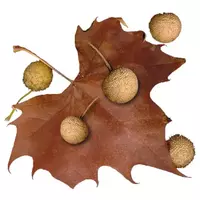Sycomore tree

The sycomore tree or "Fícus sycómorus" belongs to an extensive family of mulberry plants. The sycomore tree is ranked by scientific classification as the genus Fikus. It is worth noting that researchers classify the evergreen sycomore tree as one of the oldest fruit plants known to mankind. In its appearance, the sycomore tree is surprisingly familiar to the inhabitants of our latitudes with an oak tree.
The tall sycomore tree usually reaches 40 meters in height with a spreading crown comes from Egypt. It is noteworthy that the sycomore tree is mentioned more than once in the Bible. Legend has it that it was under the sprawling crown of a mighty sycomore tree that the holy family took refuge while fleeing Egypt. However, not only Christians considered the sycomore tree special.
In ancient Egypt, there was a whole cult according to whose beliefs the Sycomore tree personified the goddess Hathor. This goddess occupied a high position in the pantheon of Egyptian gods, her name translates as "house of Horus or heaven. " Hathor or Hathor was the patron saint of love, beauty and femininity. Researchers say that the goddess Hathor, like the Sycomore tree, the Egyptians began to read food in ancient times during the reign of the famous "scorpion king. "
According to ancient mythology, it was Hator in the form of a heavenly cow who gave the universe the sun, so she was often depicted as a beautiful statuesque woman with horns on her head. The floor in the palace of the famous pharaoh Amenechet I was made from sycomore wood. Until now, in the Middle East, the sycomore tree is considered connected and inviolable. It is worth noting that often under the name sycomore tree, other plants are hidden, for example, a water glider or false-plated maple.
The fruits of the sycomore tree are eaten. However, to a greater extent, the sycomore tree refers to inviolable symbol plants. In Egypt, there is still a belief that sycomore leaves help a person avoid adverse situations and misfortunes. Amulets are made from sycomore leaves, and objects of magical cult are made from wood. The sycomore tree is considered a centenarian and a symbol of strength as well as prosperity.
The fruits of the sycomore tree resemble figs to taste. True, unlike figs, the fruits of sycomore taste more fresh and watery. Usually the fruits of sycomore are eaten fresh. However, jam made from sycomore fruits has long been especially popular and in demand. In addition, juice is obtained from the fruits of sycomore, which immediately turns into jelly, since it contains a large amount of the natural gelling substance pectin.
Currently, sycomore is cultivated in the Middle East, as well as in Israel, where two main species of the plant grow - balami and razi. The sycomore razi tree is considered a symbol and is depicted on the coat of arms of the large Israeli city of Holon, located in the very center of the country.
sycomore tree 214 kCal
The energy value of the sycomore tree (Ratio of proteins, fats, carbohydrates - ju):
Proteins: 1.3 g (~ 5 kCal)
Fats: 0.5 g (~ 5 kCal)
Carbohydrates: 0 g (~ 0 kCal)
Energy ratio (bj | y): 2% | 2% | 0%
 Español
Español Français
Français Português
Português Русский
Русский 简体中文
简体中文 繁體中文
繁體中文 日本語
日本語 한국어
한국어 العربية
العربية Türkçe
Türkçe Қазақ
Қазақ Deutsch
Deutsch Italiano
Italiano Українська
Українська
